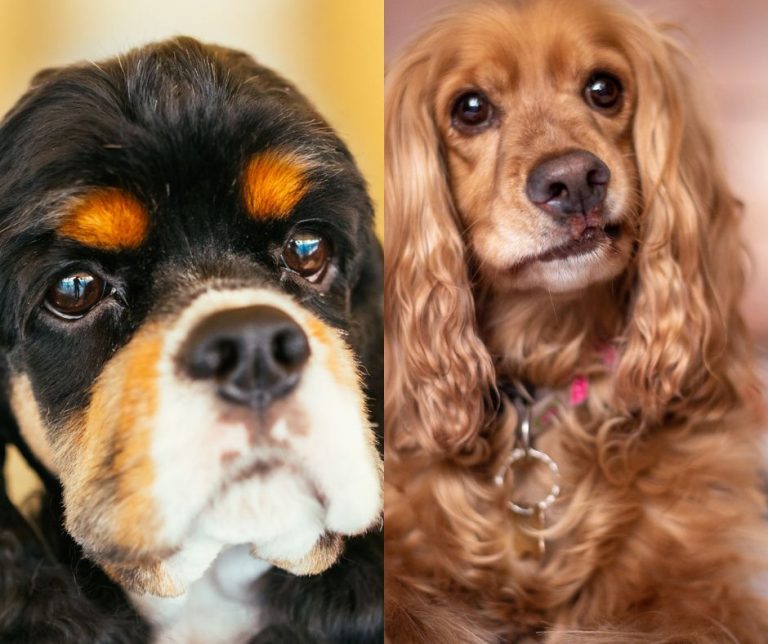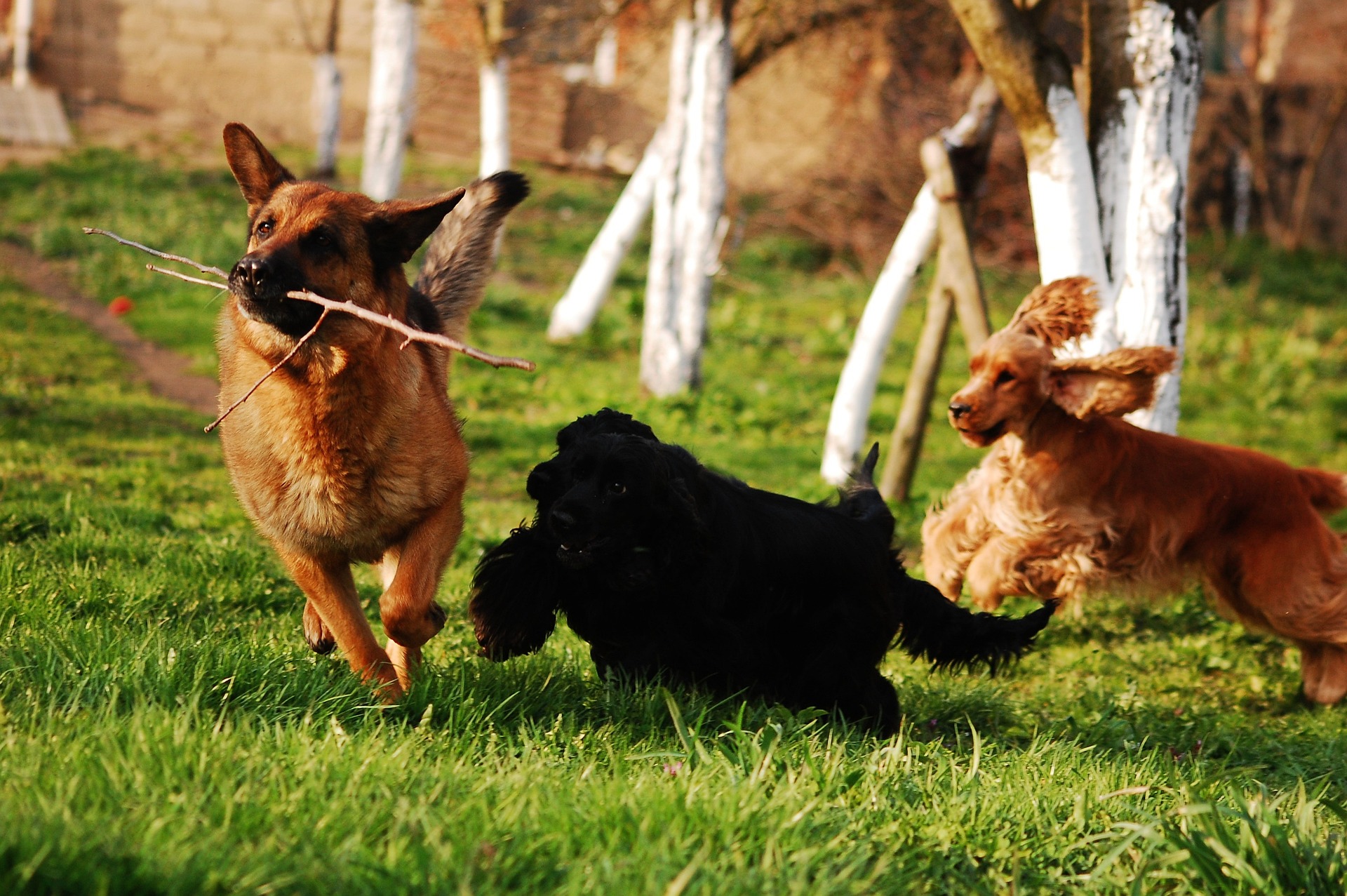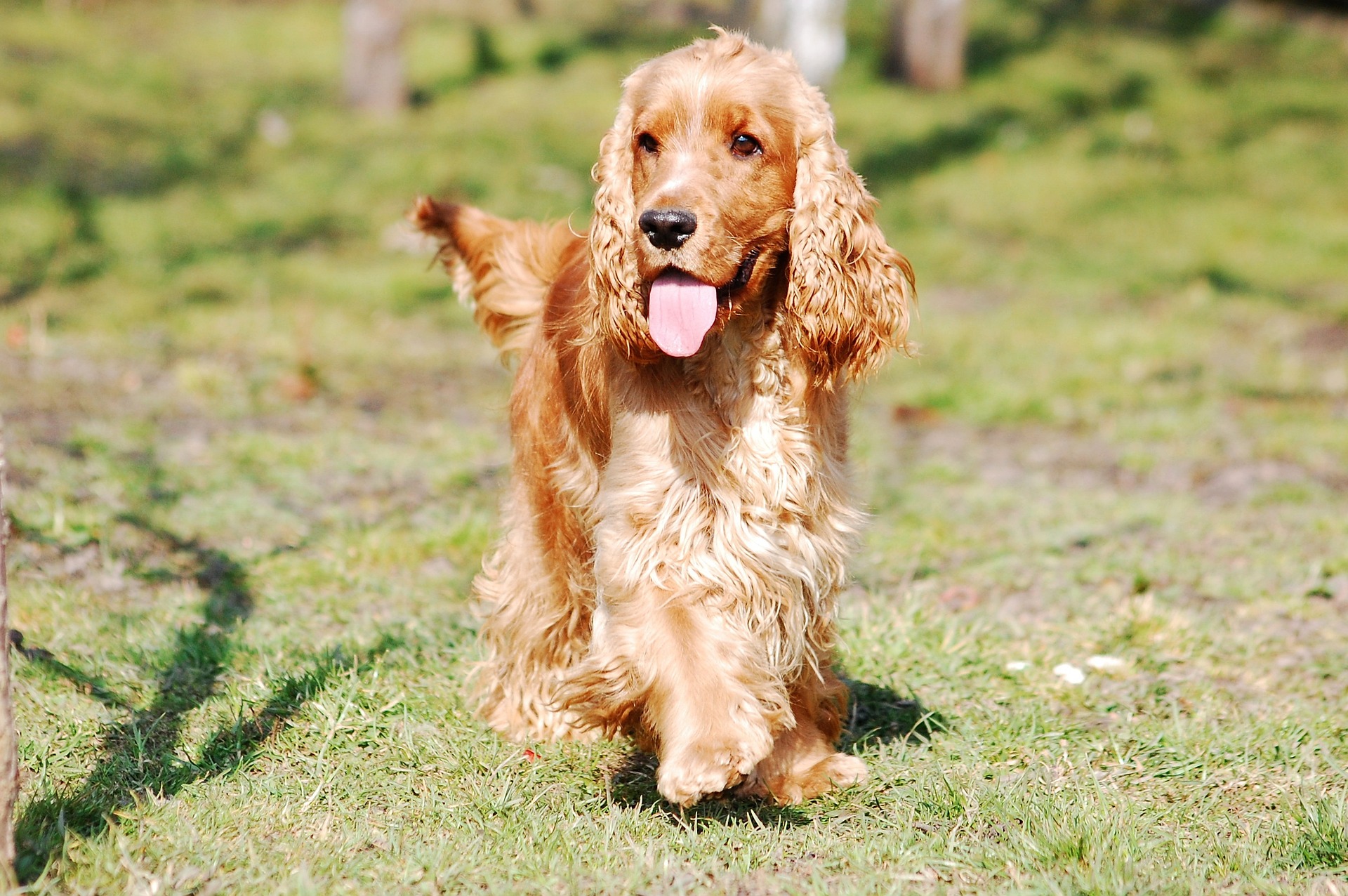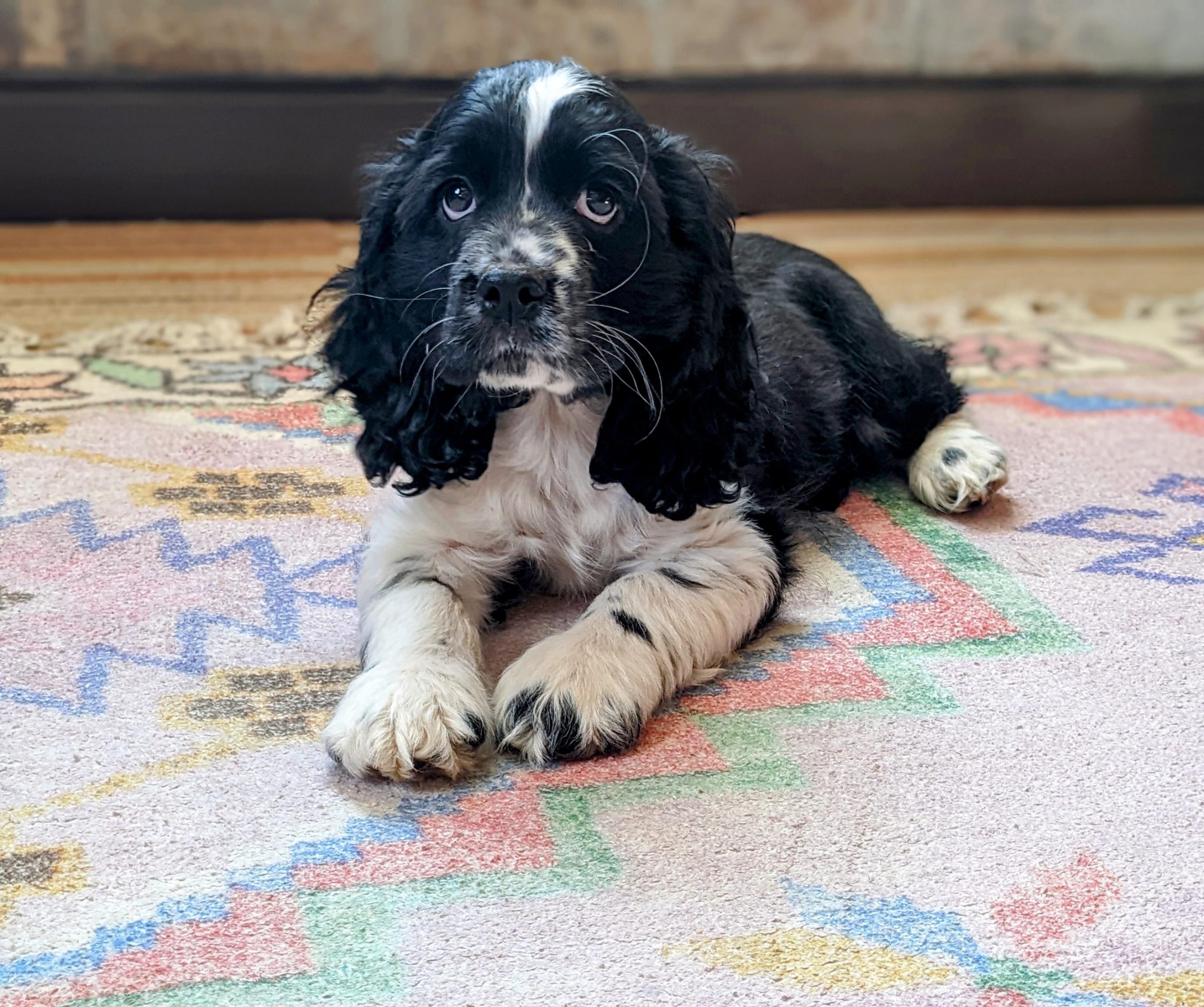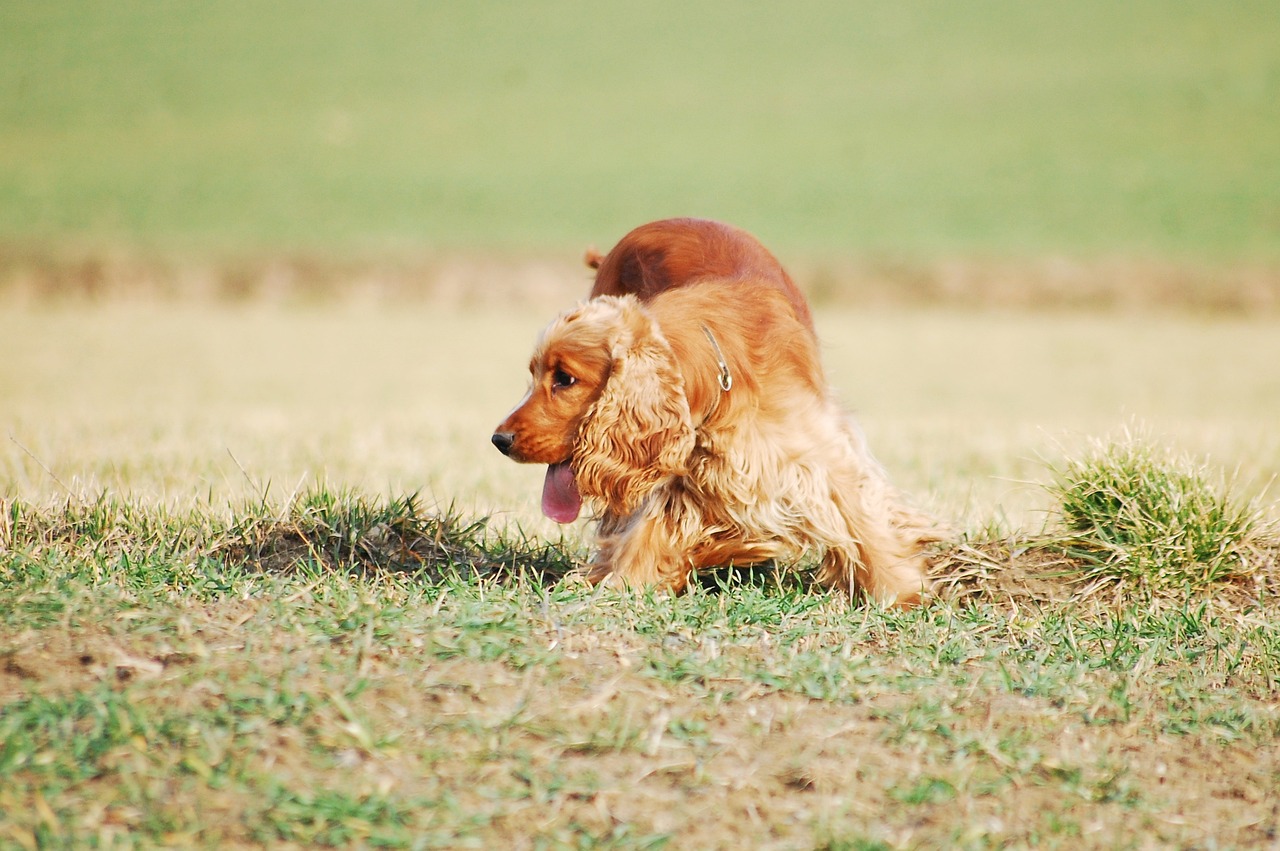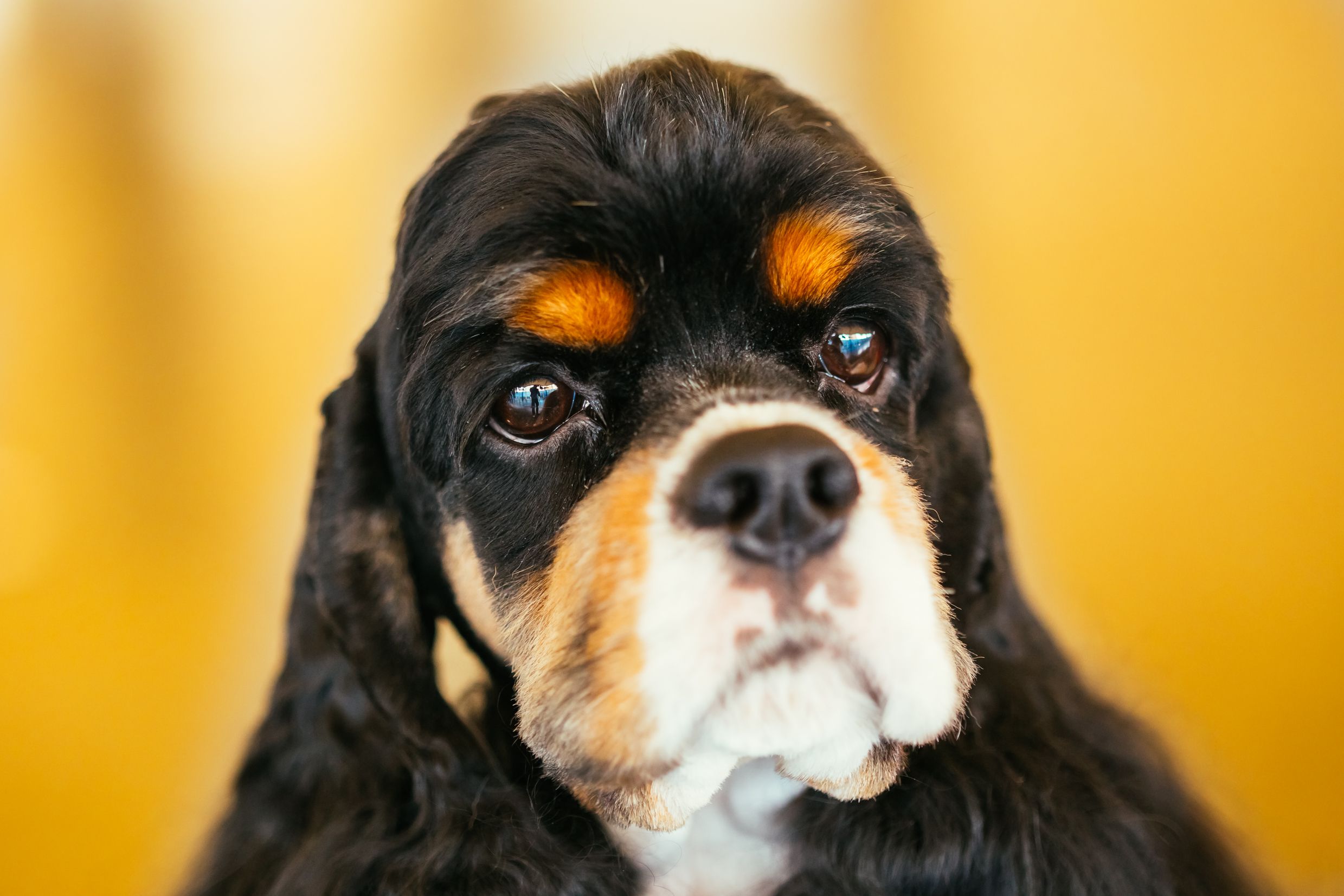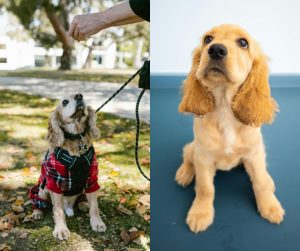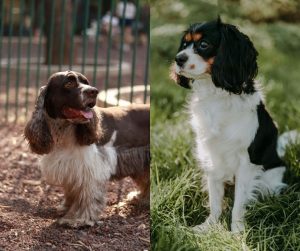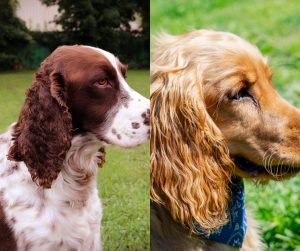Cocker Spaniels are among the most beloved dog breeds, adored for their endearing looks and amiable personalities. Many people use the term ‘Cocker Spaniel’ broadly, but it actually encompasses two distinct breeds: the English Cocker Spaniel and the American Cocker Spaniel. Though they share a common lineage, these two breeds have evolved with differences that extend beyond geographic names.
Let’s explore the nuances that set the English and American Cocker Spaniels apart. We will try to provide prospective pet owners with key insights into which breed might be best suited to their lifestyle and preferences.
The differences between the English and American dogs breeds are the result of selective breeding that emphasized certain traits. This has led to notable variances in their physical characteristics, such as size and coat, and even in their temperament and dog training needs. Understanding these distinctions is crucial for anyone considering one of these affectionate companions, as it can impact not only the living environment suitable for them but also the grooming, exercise, and healthcare they will require throughout their life.
Without further ado, let’s delve into the English vs American Cocker Spaniel dog breed comparison.
Key Takeaways
- English and American Cocker Spaniels differ in size, coat, and physical structure
- Each breed exhibits unique personality traits and requires specific exercise and training approaches
- Prospective owners should consider the grooming needs and health considerations inherent to each dog breed
Breed Origins and History
The Cocker Spaniel’s saga begins in England, where they’re part of the vibrant tapestry of spaniel breeds. These sporting dogs were originally bred for flushing game, specifically woodcock, which is how they got the ‘Cocker’ in their name.
In the 19th Century, the English Cocker Spaniel crystallized as its own distinctive breed. Known for their stamina and soft mouths—a prized trait allowing them to retrieve without damaging the hunt’s prize—they were equally adored in the field as in family homes.
Across the pond, the breed took a rather different turn. The American Cocker Spaniel, often just called the Cocker Spaniel in the United States, established its own identity. One key contributor was Ch. Obo II, an Obo son born in the US, who shaped the American breed.
Compared to their English cousins, the American Cockers became smaller and developed a different profile, with some saying it’s all in the eyes—big and soulful.
| Trait | English Cocker Spaniel | American Cocker Spaniel |
|---|---|---|
| Size | Larger, 12-16 kg | Smaller, 7-14 kg |
| Leg Proportion | Longer-legged | Shorter-legged |
| Popularity Peaks | – | 1940s, ’50s, and 1980s in the US |
While the English Cocker has maintained a steadier presence in the UK, the American variant soared in American hearts during the mid-20th century. Yet, no matter the type, these joyous creatures have darted happily through history, bringing smiles to faces whether on the hunt or curled up beside a family’s hearth.
Both the English and American Spaniel are closely related to other Spaniel breed dogs. For example, the Springer Spaniel, Cavalier King Charles Spaniel, and more. They are all recognized as a separate breed by the American Kennel Club.
Physical Characteristics
When considering an English or American Cocker Spaniel, knowing the subtleties of their physical characteristics can help one appreciate the unique qualities each breed brings. These charming dogs display distinctive features that are more than just a matter of size or color. For those enchanted by these breeds, these details matter greatly.
Size and Weight
The English Cocker Spaniel typically carries a bit more heft, weighing in at 12-16kg, with a stature that aligns with their solid build. They sport a slightly taller frame, with heights ranging around 38-43cm at the shoulder.
In comparison, the American Cocker Spaniel usually falls in a lighter weight bracket of 7-14kg and stands a touch shorter, approximately 34-39cm tall.
Coat and Colors
Both the English and American varieties boast a long, silky coat that comes in a rainbow of colors, including solids and multi-color combinations. Regular brushing and grooming are essential to keep their fur mat-free and lustrous.
The English Cocker often presents a shorter coat, particularly in the working type, while the American counterpart is known for its luxurious fur that can require more grooming effort.
Facial Features
Differences in facial features between the two are marked by their ears and muzzle. The American Cocker Spaniel‘s ears are typically longer, and they possess a shorter muzzle, which gives them a distinctive expression.
Meanwhile, the English Cocker has a more balanced appearance, with their muzzle length in proportion to their head, giving them a noble and alert look. Both breeds capture hearts with their expressive eyes, embodying a gentle and warm spirit.
Temperament and Personality
When distinguishing between the English and American Cocker Spaniel, their personalities and temperaments showcase some subtle but interesting differences. These canines are more than just pets; they’re companions filled with love, marked by the cheerfulness and intelligence they bring into a home. Below, let’s explore their behavioral traits and family compatibility. Let’s take a look at the English vs American Cocker Spaniel dog breed comparison.
Behavioral Traits
The English Cocker Spaniel puppy exhibits a temperament that is affectionate and gentle. They are known for their energetic and happy nature, which makes them excellent companions for outdoor adventures and play. Their intelligence shines through in their curious and alert expressions, responsive to both training and interactive play.
The American Cocker Spaniel puppy, on the other hand, displays a personality that’s traditionally seen as even more tailored for companionship. While they share the happy disposition of their English counterparts, they are often considered to be slightly more laid-back. Their affectionate nature is well suited to cuddles and calm family time, reflecting a penchant for a relaxed lifestyle, yet they retain an enthusiastic zest for life.
Family Compatibility
Both the English and American Cocker Spaniels have hearts full of love for families, making them fantastic family pets. Their affectionate nature makes them quite adaptable and eager to please their human companions.
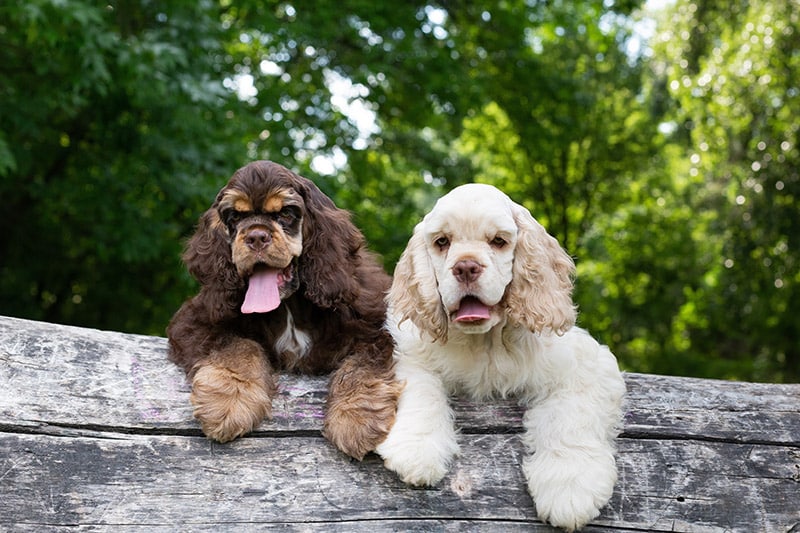
- English Cocker Spaniels: Interactive, playful, and robust, they fit well with active families. Their energy levels require regular engagement, but it’s matched by a sincere gentleness, making them a solid choice for households with children
- American Cocker Spaniels: They thrive in a family setting with their more relaxed demeanor, though they also enjoy playtime. Their slightly more reserved energy makes them suitable for various living situations, and they bond strongly with family members who provide steady companionship and gentle guidance
Health and Lifespan
When it comes to our fluffy companions, their health and lifespan are at the forefront of every pet parent’s mind. English and American Cocker Spaniels share similar health concerns, but the way we care for them can make all the difference in their quality of life.
Common Health Issues
Cocker Spaniels, both English and American breeds, can be susceptible to certain health issues. To better understand what they may face, let’s look at these conditions:
- Hip Dysplasia: A genetic condition where the hip joint doesn’t fit together perfectly, which can lead to arthritis or lameness
- Ear Infections: Their long, floppy ears can trap moisture and debris, leading to infections if not regularly cleaned
- Progressive Retinal Atrophy (PRA): A degenerative eye disorder that can eventually lead to blindness
- Cataracts: This condition can cause blurry vision or blindness, often treatable with surgery
While these issues may sound ominous, regular check-ups with a vet can help catch them early on.
Caring for Your Cocker Spaniel
To give your Cocker Spaniel a happy and healthy life, consider these tips for their care:
- Exercise Needs: They love to play and require regular physical activity to keep them fit and prevent obesity, which can exacerbate health issues
- Grooming: Their coats require regular brushing to prevent matting, and ear inspections to ward off infections
- Health Care: Keep up with vaccinations, flea, tick, and worm treatments, and consult your vet about any changes in their health
Remember, a little bit of preventive care goes a long way in ensuring your Cocker Spaniel lives a full and vibrant life.
Exercise and Training
When it comes to keeping a Cocker Spaniel happy and healthy, regular exercise and consistent dog training are absolutely key. Both the English and American varieties have an inherent zest for life and a keen intelligence that makes them as eager to play as they are to please.
Exercise Requirements
The exercise needs for both English and American Cocker Spaniels are rather similar. A healthy adult Cocker Spaniel dog breed typically requires about 45-90 minutes of physical activity per day.
This could be broken down as follows:
- Daily Walks: Essential for their well-being, a good 30 minutes stroll should do
- Free Play: Ideal to let off steam and for socialization, especially in a secured area where they can run around safely
- Mental Stimulation: Training sessions or puzzle toys can fulfill this need, preventing boredom
While the American Cocker Spaniel might present a slightly lower energy level compared to their English counterpart, they both thrive on regular exercise to maintain physical health and emotional well-being. One shouldn’t confuse their compact size with a low energy level; they’re quite lively and love to be on the go!
Training Techniques
Training a Cocker Spaniel, be it English or American, is generally a pleasant experience owing to their high trainability. These are the focus points:
- Positive Reinforcement: They respond best to kind, encouraging training methods. Praise and treats can work wonders for motivation
- Consistency: Like raising good kids, dogs need rules to be consistent
- Apply the same commands and reward system daily
- Patience and Understanding: They might occasionally be stubborn but reacting with patience can yield the best outcomes
Starting training early, with simple commands like “sit” and “stay,” can lay the foundation for a well-behaved adult dog.
As they learn, one can introduce more complex commands and tricks. Whether they’re learning a new trick or mastering an old one, it’s important for their training to be as enjoyable and engaging as the physical exercise they crave.
Grooming Needs
Grooming is a key aspect of caring for both American and English Cocker Spaniels. These delightful pups sport long, silky coats that call for regular attention to keep them looking their best and to prevent discomfort.
American Cocker Spaniel Grooming
The American Cocker Spaniel’s coat is luxuriously thick, with feathers on the legs, chest, and belly that are oh-so-soft to the touch.
While utterly gorgeous, this Spaniel breed’s coat does require frequent brushing—think a few times a week—to prevent tangles and mats.
A pin brush or a slicker brush usually works wonders. They may also benefit from regular trims, so a visit to a professional groomer every 6 to 8 weeks can keep their coat in tip-top shape.
English Cocker Spaniel Grooming
On the other hand, the English Cocker Spaniel has a slightly shorter coat but don’t be fooled, they also need consistent grooming.
Just like their American cousins, they should be brushed several times a week. They have feathering too, though not quite as dense.
Professional grooming is also recommended for them, helping manage their coat’s health and shine.
Table Summary: Grooming At A Glance
| English Cocker Spaniel | American Cocker Spaniel |
|---|---|
| Slightly shorter coat | Luxuriously thick coat |
| Regular brushing (2-3 times/week) | Regular brushing (2-3 times/week) |
| Less dense feathering | Dense feathering |
| Professional trims (6-8 weeks) | Professional trims (6-8 weeks) |
Remember, gentle patience during grooming strengthens the bond between you and your furry friend. Happy brushing!
Cocker Spaniels as Working Dogs
Cocker Spaniels, both English and American varieties, excel in a variety of working roles due to their intelligence and agility. These breeds demonstrate remarkable versatility in both sporting and service domains.
Roles and Responsibilities
As sporting dogs, Cocker Spaniels originally earned their stripes in the field as hunting dogs. They possess a natural instinct to track and flush out game, specifically birds, which makes them an invaluable companion to hunters.
Their size and speed allow them to navigate through brush in pursuit of game, making them excellent for woodland hunting.
In the realm of dog sports, these Spaniels truly shine.
Their agility and eagerness to please make them strong competitors in events like rally and agility competitions.
These sports not only provide them with the physical exercise they crave but also satisfy their mental stimulation needs.
By navigating obstacle courses and following commands with speed and precision, Cocker Spaniels continually prove to be a crowd favorite.
Therapy and Service
Both varieties have a gentle and affectionate temperament, traits that lend themselves well to roles as therapy dogs.
Their soft presence and empathetic nature make them perfect for providing comfort and support to individuals in hospitals, schools, and nursing homes.
As they stroll through these places, their patient demeanor and friendly tail wags can lift spirits and provide a calming influence.
While American and English Cocker Spaniels are not commonly associated with traditional service dog roles, their keen senses and trainability can be harnessed in this area to a certain extent.
They have been known to assist in less physically demanding service tasks, and their empathetic nature can make them suitable for emotional support roles.
Acting as the ears and eyes for those in need, or just being a steady companion, these dogs are all about bringing joy and facilitating better days for people around them.

